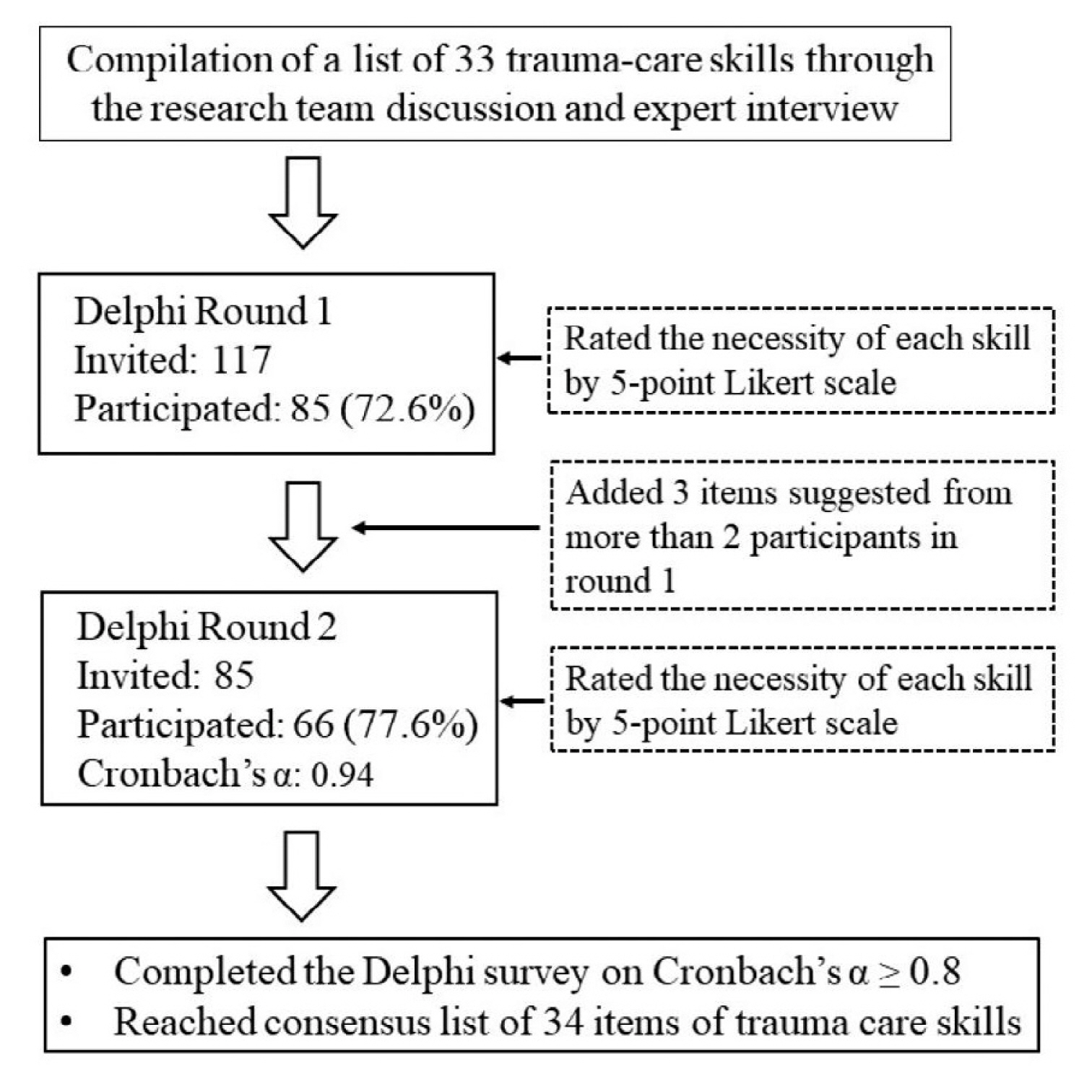1. MacKenzie EJ, Rivara FP, Jurkovich GJ, Nathens AB, Frey KP, Eqleston BL, et al. A national evaluation of the effect of trauma-center care on mortality. N Engl J Med 2006;354(4):366ŌĆō78.


2. Liberman M, Mulder DS, Lavoie A, Sampalis JS. Implementation of a trauma care system: evolution through evaluation. J Trauma 2004;56(6):1330ŌĆō5.


3. Balasubramanian I, Mohan HM, Whelan RJ, McDermott F, Winter DC. Restructuring an evolving Irish trauma system: What can we learn from Europe and Australia? Surgeon 2016;14(1):44ŌĆō51.


5. Mashiko K. Trauma systems in Japan: history, present status and future perspectives. J Nippon Med Sch 2005;72(4):194ŌĆō202.


6. Kobayashi K. Challenges for improving trauma care in Japan. J Trauma 2005;58(6):1134ŌĆō9.


8. Singh P, Aggarwal R, Zevin B, Grantcharov T, Darzi A. A global Delphi consensus study on defining and measuring quality in surgical training. J Am Coll Surg 2014;219(3):346ŌĆō53e7.


9. Nagpal K, Arora S, Abboudi M, Vats A, Wong HW, Manchanda C, et al. Postoperative handover: problems, pitfalls, and prevention of error. Ann Surg 2010;252(1):171ŌĆō6.

10. Developing Committee on the Course of Trauma Care Training of the Japan Association for the Surgery of Trauma: Guideline for Initial Trauma Care. Japan Advanced Trauma Evaluation and Care. 5th ed. Tokyo (Japan): Herusu Shuppan Company; 2016:[in Japanese].
12. LoCiecero J 3rd, Mattox KL. Epidemiology of chest trauma. Surg Clin North Am 1989;69(1):15ŌĆō9.


13. Mattox KL, Wall MJ Jr, Tsai P. Trauma Thoracotomy: Principles and Techniques. Mattox KL, Moore EE, Feliciano DV. editors. Trauma. 7th Ed. New York (NY): McGraw-Hill Education; 2013: p.461ŌĆō7.
14. Wall MJ Jr, Huh J, Mattox KL. Indications for and Techniques of Thoracotomy. Feliciano DV, Mattox KL, Moore EE. editors. Trauma. 6th Ed. New York (NY): McGraw-Hill Education; 2008: p.512ŌĆō23.
15. Burlew CC, Moore EE. Emergency Department Thoracotomy. Mattox KL, Moore EE, Feliciano DV. editors. Trauma. 7th Ed. New York (NY): McGraw-Hill Education; 2013: p.236ŌĆō50.
16. Beal SL. Fatal hepatic hemorrhage: an unresolved problem in the management of complex liver injuries. J Trauma 1990;30(2):163ŌĆō9.

18. Carrillo C, Fogler RJ, Shaftan GW. Delayed gastrointestinal reconstruction following massive abdominal trauma. J Trauma 1993;34(2):233ŌĆō5.


19. Chappuis CW, Frey DJ, Dietzen CD, Panetta TP, Buechter KJ, Cohn I. Management of penetrating colon injuries. A prospected randomized trial. Ann Surg 1991;213(5):492ŌĆō8.


20. Sasaki LS, Allaben RD, Golwara R, Mittal VK. Primary repair of colon injuries: a prospected randomized study. J Trauma 1995;39(5):895ŌĆō901.

21. Pasquale M, Fabisn TC. Practice management guidelines for trauma from Eastern Association for the Surgery of Trauma. J Trauma 1998;44(6):941ŌĆō56. discussion 956ŌĆō7.

25. Dubose JJ, Scalea TM, Brenner M, Skiada D, Inaba K, Cannon J, et al. The AAST prospective Aortic Occlusion for Resuscitation in Trauma and Acute Care Surgery (AORTA) registry: data on contemporary utilization and outcomes of aortic occlusion and resuscitative balloon occlusion of the aorta (REBOA). J Trauma Acute Care Surg 2016;81(3):409ŌĆō19.

26. Aso S, Matsui H, Fushimi K, Yasunaga H. Resuscitative endovascular balloon occlusion of the aorta or resuscitative thoracotomy with aorta clamping for noncompressible torso hemorrhage: A retrospective nationwide study. J Trauma Acute Care Surg 2017;82(5):910ŌĆō4.

29. Jacobs LM, Burns KJ, Kaban JM, Gross RI, Cortes V, Brautigam RT, et al. Development and evaluation of the advanced trauma operative management course. J Trauma 2003;55(3):471ŌĆō9. discussion 479.


30. Mark W, Deborah A, Haskin Danielle, Richard A, Sharon M, George D, et al. Advanced surgical skills for exposure in trauma (ASSET): the first 25 courses. J Surg Res 2013;183(2):553ŌĆō8.












